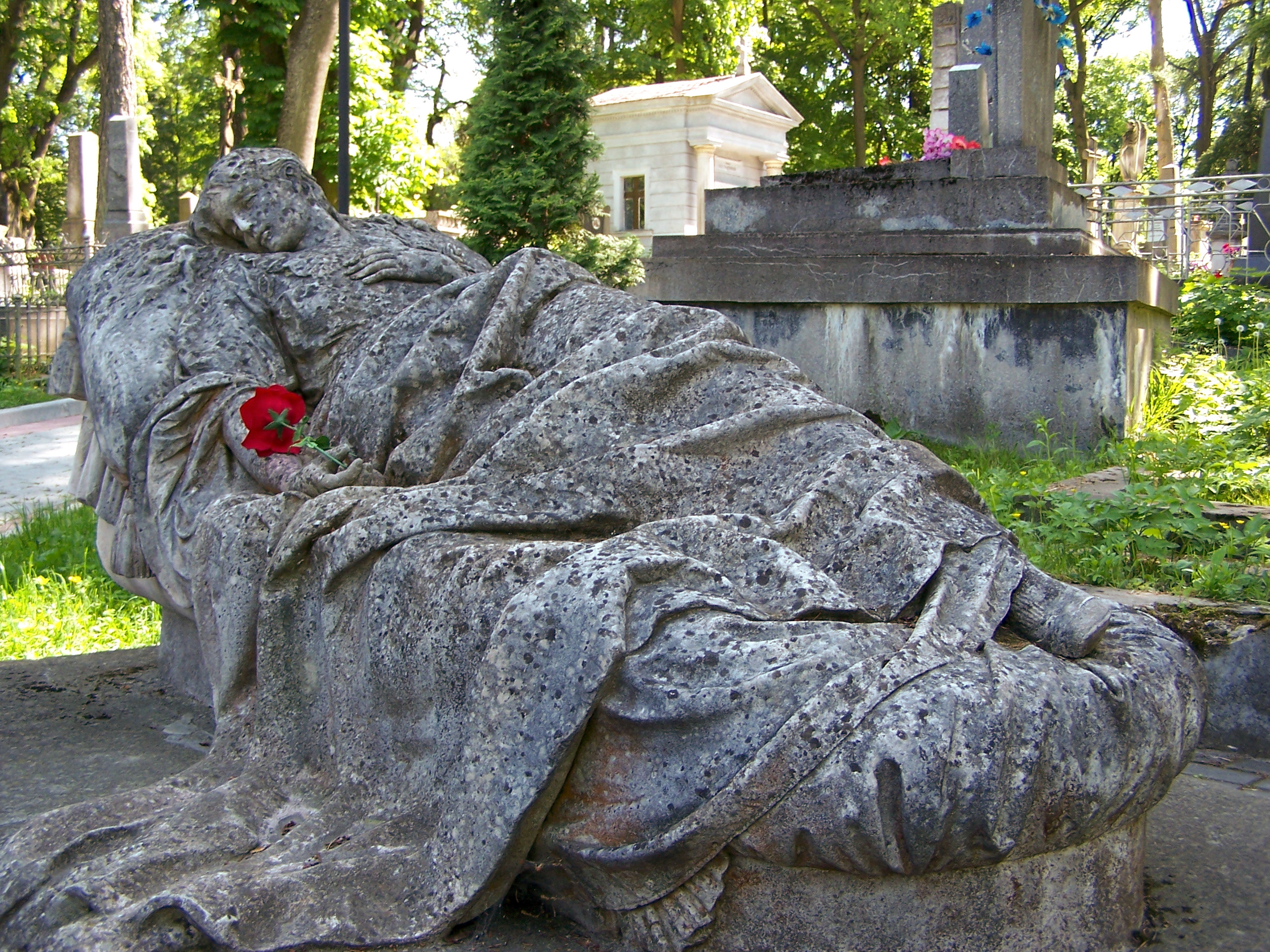
The cemetery of Lychakiv is one of the oldest graveyards in Europe, dating from 1567. Lviv's most prominent graveyard is now an open air museum and considered by many to be even more than that. It is now a major Lviv tourist attraction, a "gallery of art work", featuring graves of many renowned personalities of Ukraine and Poland.
The cemetery really came into its own in 1787 when it became the final resting place for Lviv's intelligentsia, upper and middle classes. It was set in the hills of the Lychakiv borough according to an Imperial Austro-Hungarian edict that said all cemeteries had to be placed outside the city limits. In the 1850's the cemetery was expanded to include all the present day paths and alleys. In turn, it became the main cemetery for Lviv where almost everyone was buried. Almost all other cemeteries closed.
Of course, the most important aspect of the cemetery is the variety of beautiful gravestones in memorial to famous soldiers, poets, artists, writers, composers, historians, etc., primarily of Polish descent. Unfortunately, after World War II, many of the monuments began to be destroyed by the Soviets. The sculptures were destroyed up until 1971...the part of the cemetery dedicated to the Lviv Eagles was completely destroyed and turned into a truck depot! The Lviv Eagles were child soldiers that defended the city in the Ukrainian-Polish was of 1918-1919. The destruction stopped in 1975 as the cemetery was declared a historical monument, and since the 1980's reconstruction has continued and the cemetery has become a popular tourist attraction.
It struck me as odd that a cemetery would be advertised as a reason to come to visit a city, would be used as a tourist attraction. Then I remembered all the cemeteries or graveyards I have visited. These, however, tended to be battlefield cemeteries and any monuments within them, in my opinion, are less to be admired for artistic value (even if they are beautiful) and more so to act as a reminder of the deeds that were accomplished by the people or groups they represent. Lychakiv, on the other hand, looks like a very beautiful place meant to show off the architecture and artistic beauty of Lviv (like a town square or old building would do) more than make people remember who the people under the graves are or what they did. None of this bothered me, cemeteries for me were just never a place I would go to tour unless I had a reason, regardless of how beautiful. I then discovered that "cemetery tourism" is kind of a trendy thing, at least in the US, where cemeteries do things such as have Sunday jazz concerts, brunches, dog shows, bird watching sessions, etc. in order to raise money for preservation (partly due to so many people choosing cremation over burials.) It makes sense to me that certain older, architecturally attractive cemeteries would try to consolidate their customer base, "projecting themselves as repositories of architectural and sculptural treasures, like weeping marble maidens atop tombs. " I guess I answered my own question on why such a old and prestigious cemetery such as Lychakiv would open up for tourism.
3 comments:
This was a really thorough entry! What I wondered is not only WHY more attention isn't paid to the section of the cemetery where the Lviv Eagles are buried, but also why this was the section that was demolished!! Here in the U.S. we obviously take cemeteries where soldiers are laid to rest very seriously, and I think that if we had used child soldiers, we would revere their graves even more. Yet the tombs of artists and intellectuals were preserved in Lyachikiv (by the Soviets, no less!) and the graves of the Eagles were done away with to make room for a municipal project. Interesting!
*Lychakiv
Whoops, typo!
Very nice post. Personally, though I think you discount the value of artistic beauty and cultural importance. It seems you call cemetary visiting mearly trendy or commercial.
Two years ago, I met a German collegue in Northern Germany, and then traveled by car with him to an area of Northern Poland where both of our families orginated. He made a point to show me the local cemetary where his father is buried in Germany, before we left for Poland.
In Poland, we visited many Kaszubian (a small slavic ethnic group in North-Eastern Poland) cemetaries--some, because of family significance, and others, just because of their beauty.
I did enjoy the beauty of these places. Reflecting on the differences of the cemetaries (and how they were cared for) also taught me a lot about the simularites and differances amoung these three cultures, US, German, and Kaszubian. I think a trip to Lychakiv would not only be an enjoyable due to the beauty, but would be an important lesson about the local culture. Cemetaries are almost living museams, as one can also see how the local people react to and care for the area--relating to the comments regarding Soviet and Ukrainian preservation and the Lviv Eagles.
Post a Comment